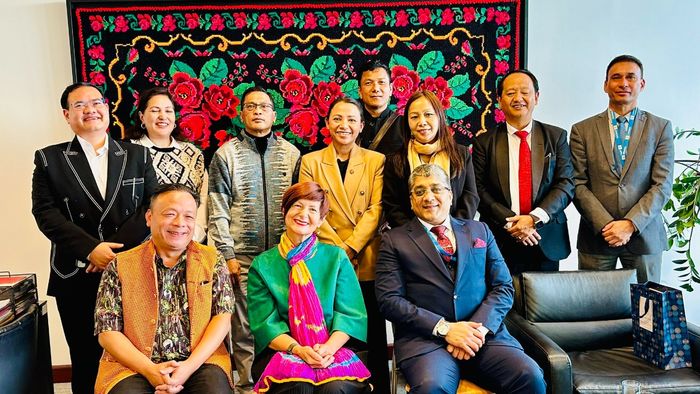Meghalaya delegation seek 'UNESCO World Heritage status' for living root bridges
A ministerial delegation from Meghalaya, led by Tourism Minister Paul Lyngdoh, visited UNESCO headquarters in Paris to advocate for the state's living root bridges to be recognised as World Heritage Sites. The visit included discussions with key UNESCO officials and showcased Meghalaya's cultural heritage.

- Sep 13, 2024,
- Updated Sep 13, 2024, 7:43 PM IST
A ministerial delegation from Meghalaya is actively campaigning for UNESCO World Heritage recognition of the state's unique living root bridges. Known locally as Jingkieng jri, these extraordinary structures crafted by the Khasi tribe are currently on India's tentative list for World Heritage consideration.
Led by Tourism Minister Paul Lyngdoh, the delegation recently visited UNESCO headquarters in Paris to advocate for this cultural landscape. The team engaged in discussions with key UNESCO officials, including Nicholas Jeffreys, Assistant Director General for Administration and Management, and Omar Baig, Chief Information and Technology Officer.
Minister Lyngdoh described the visit as an honour, emphasising Meghalaya's commitment to cultural and educational cooperation on a global scale. The delegation explored UNESCO's extensive archives, gaining insights into the organisation's history and its role in fostering international understanding.
During the visit, Lyngdoh met with Vishal V Sharma, India's Ambassador to UNESCO, to showcase Meghalaya's rich textile heritage. The minister presented Sharma with a traditional shawl made from Ryndia silk, highlighting the state's diverse cultural offerings.
The delegation's efforts underline Meghalaya's proactive approach to seeking international recognition for its living root bridges. These structures, which combine traditional knowledge with natural materials, represent a unique aspect of the state's cultural identity.
Romanian Ambassador Simona-Mirela Miculescu, current President of UNESCO's General Conference, welcomed the Meghalaya delegation, noting the state's exceptional biodiversity. This high-level engagement demonstrates the growing international interest in Meghalaya's living heritage and supports the state's bid for UNESCO World Heritage status.